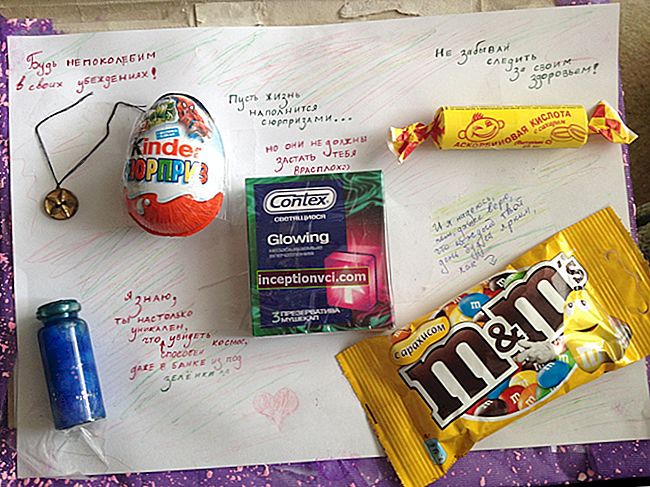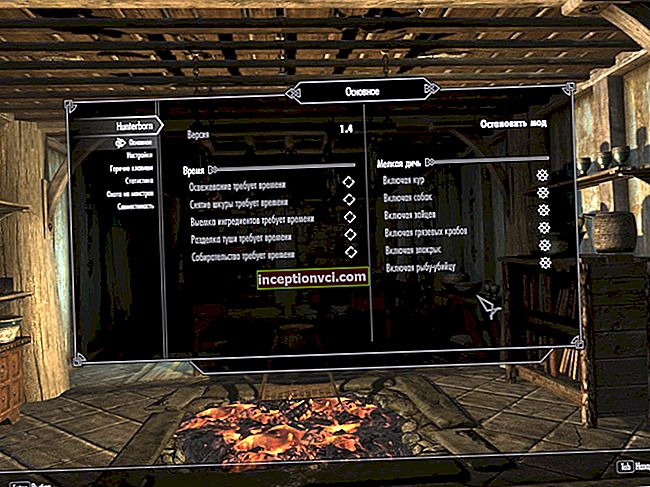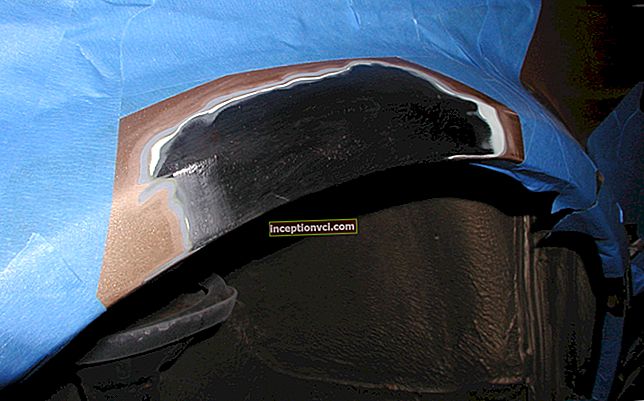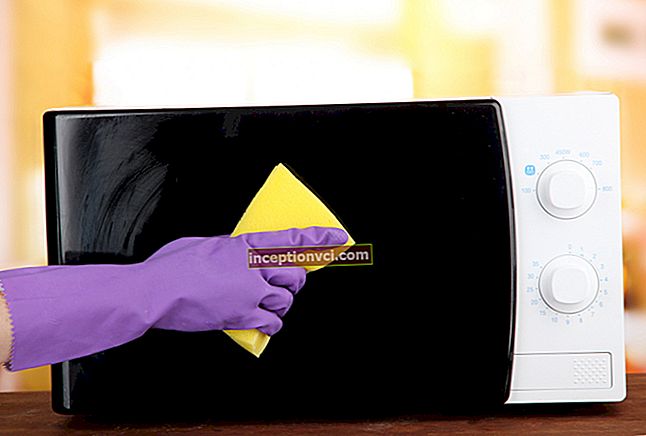Meet the new Panasonic Lumix DMC-FZ100.
Main characteristics:
- - 24x zoom LEICA DC VARIO-ELMARIT 25-600 mm;
- - high-speed 14 megapixel MOS sensor;
- - new processor Venus Engine FHD;
- - continuous shooting at 11fps at full resolution and 60fps in
- second when lowering to 3.5 megapixels;
- - three-inch, swivel LCD screen with a resolution of 460 thousand pixels;
- - Full HD video recording in 1080i format at 30 frames per second;
- - image stabilization system;
- - recording images in RAW format;
- - support for ISO 1600.
Ease of use
The design of the Panasonic Lumix DMC-FZ100 is in many ways similar to its predecessor, the FZ38, and the manufacturer has made several key improvements to make the user-friendly camera even more convenient. The FZ100 strives for class DSLR cameras, although it has a fixed lens and an electronic viewfinder. The camera stands out from the crowd with its 24x optical zoom lens, which provides an incredibly versatile 25-600mm focal length range. While not as wide as the 30x zoom competitors, in real use it provides enough angle and zoom to suit almost any photographer's need.
One of the key features of the new camera is ultra-high-speed continuous shooting, made possible by the new sensor used in the FZ100. Burst shooting speed can reach 60 frames / s (with resolution down to 3.5 MP), while the burst lasts just one second. After recording a series, the camera copies the contents of the buffer to the memory card for some time, so the use of high-speed cards is especially critical here.
Panasonic's "Power O.I.S (Optical Image Stabilization)" optical stabilization system is once again installed in the camera to combat unwanted shake, yet this system does not cancel the use of a faster shutter speed or tripod when shooting at the camera's maximum zoom.
F2.8 maximum apertures at 25mm and F5.2 at 600mm are good enough for a camera in this class.
To avoid glare and stray light, a removable hood is supplied in the kit, and you will also find a protective lens cap that can be attached with a cord to the shoulder strap. On the lens itself, as well as on SLR lenses, you will find an AF / AF Macro / MF switch. When the switch is set to MF, the focus range can be manually set from 30 cm to infinity, enlarging the center of the frame for more accurate focusing. Just below is the focus button, which allows you to set the focus point anywhere in the frame.
There is a quick access flash slightly above the lens, its activation button is installed slightly behind. It's nice to note that the camera has got a hot shoe connector for installing an additional flash; note that the FZ38 did not have it. The guide number of the built-in flash has also increased compared to the FZ38, now it is 9.5m at the wide-angle lens position. A built-in microphone is installed near the flash, which is preserved here from the FZ38.
The Panasonic Lumix DMC-FZ100 is not a camera that you can just throw in your pocket, with dimensions of 124.3 x 81.2 x 95.2 mm it will feel much better in a shoulder bag. Weighing less than 500 grams, the camera is very solid and fits comfortably in the hand. It is very pleasant to find a viewfinder in this camera, here it is electronic (EVF), measuring 0.2 inches, with 100% frame coverage and 200 thousand points.
At the top of the FZ100, you can see a functional ring for selecting shooting modes (there are 14 of them here). On this ring, you can see the already familiar modes - shutter priority, aperture priority, manual mode, video mode, scene mode, night mode, sports, landscape, portrait, a scene for prescribing your own settings, and the mode that has already been talked about a lot - “Intelligent Auto Mode ”or Smart Mode Auto.

Appearance

Swivel three-inch screen
Panasonic has tried to make things as easy as possible for those who are just starting to take pictures by using the camera's shooting mode, which allows you to point and take pictures without resorting to a choice of different modes and settings. When taking a photo, Intelligent Auto Mode immediately determines a number of key parameters, including choosing the most suitable scene mode (out of 5 commonly used settings), ISO value and including face detection software (up to 15), image stabilization system and fast auto focus. Intelligent Auto Mode includes Intelligent Exposure, which increases exposure in under-exposed areas of the image, Digital Red-Eye, which automatically detects and removes red-eye, and an AF Tracking System that continuously tracks a moving subject and keeps it in focus without having to hold a button release the shutter halfway down like most other cameras.
The face recognition system is a really interesting and useful feature that can remember up to 6 captured faces and prioritize focusing on those faces the next time you shoot. Very useful for group photos where you want your loved ones to be the center of attention. You can specify the age of the registered object, set the age on the photo and play only those photos in which this person is present. Moreover, the camera will automatically switch to child mode if a registered object under 3 years old appears in the frame.
In practice, Intelligent Auto Mode works very well, the camera quickly selects the most appropriate combination of parameters for the current shooting situation. There are 5 shooting modes available to the user for Intelligent Auto Mode: Macro, Portrait, Landscape, Night Portrait, Night Landscape and Sunset, so, obviously, not all situations are covered by Intelligent Mode, but it really always works. This mode enables less experienced photographers to take well-exposed, sharp photographs of people, landscapes and close-ups with a simple press of the shutter button. In addition to Intelligent Mode, the photographer will get 22 other modes.
In 2010, Panasonic introduced a new feature in the line of compacts - Intelligent Resolution. It does two things - it either makes the standard image look like it with a higher resolution, by processing the contours of the areas, or digitally increasing the zoom factor from 24x to 32x with minimal loss of quality and without degradation in resolution. In addition to everything, Extra Optical Zoom can be used which allows you to increase the zoom range up to 50.6x by using the center of the MOS sensor, albeit with a reduction in image size to 3MP.
In addition, mention should be made of the white balance function. As usual, the normal white balance and auto settings are available to you, and you can also set the camera white balance using two metered settings. This allows you to get quality shots when you're shooting in mixed lighting conditions that don't cover the usual settings. In addition, the Color Temperature function allows you to dial in an accurate “K” value of the color temperature, you actually get a preview of the white balance on the LCD screen.

View from above
The video recording button has been moved up from the back of the camera to make it easier for the operator to operate it with the index finger.
As you would expect, this allows you to start recording video with a simple press of a button, and then stop recording by pressing the same button, regardless of which shooting mode is selected. It is much faster and easier than choosing a video mode, then pressing the shutter button, as is done on many cameras in this class.
Video
The FZ100 can record Full HD 1920 x 1280 60i (NTSC) / 50i (PAL) video at 30 frames per second. In addition, it can record Motion JPEG video at 320 x 240, 640 x 480, 848 x 480 and 1280 x 720 pixels at 30 frames per second.Thanks to the new MOS sensor, the camera has a high-speed shooting mode, as the name implies, it allows you to record video at 220fps in QVGA quality.
The Creative Movie mode allows you to set shutter speed, aperture, or both at the same time during shooting. Changing the shutter speed is especially suitable for shooting fast-moving subjects, while the ability to control the aperture is convenient for shooting subjects at different distances from the operator.
Intelligent Auto mode described above is also available when shooting video as well as when shooting photos. You just need to select iA when choosing a mode and press the video capture button. The camera automatically detects the most suitable scene mode from among the normal, portrait, macro, landscape and low light modes. Face detection technology automatically detects faces in the frame and adjusts focus, exposure and contrast. Intelligent Exposure continually checks ambient light levels and adjusts exposure settings as lighting conditions change to prevent glare and block shadows, while POWER OIS (Optical Image Stabilizer) and Motion Deblur help prevent hand-shake blur when using long focal lengths.
Thanks to the large internal microphone, stereo sound is recorded during video recording, which is a great advantage over the sound quality of most cameras of this class, having the ability to block the sound of the wind. For creative sound recording, the optional DMW-MS1 microphone is available. The HDMI port installed on the camera allows you to connect the FZ100 to a high definition TV, but with the purchase of an optional cable. Simultaneously with video recording, the camera allows you to take photos, albeit with a reduced resolution of 3.5MP.

Side view
While recording video, which is very convenient, you can use the zoom, although the zoom speed is unfortunately much slower than for still images, and you can hear the characteristic sound of the zoom mechanism during recording. Focus is set through a set of focus modes on the top of the camera. On the other hand, if you choose continuous autofocus, you will find that the image area will blur slightly before sharpening again as the camera tries to refocus. But it's not all bad, the FZ100 is pretty quick when reorienting, and this system is much better than the camera's inability to autofocus at all.
Camera equipment
The camera's power button is next to the mode dial. Note that the autofocus system is very fast and it takes just over 1 second for the camera to fully power up.
The new MOS sensor found in the FZ100's means that burst speed is significantly improved over its predecessor, the FZ38. Including burst mode with a button on the top of the camera, you can take up to 15 photos at 11 frames per second. However, Continuous AF is not available during continuous shooting. AF-Continuous is only available when shooting at 5 or 2 frames per second. Continuous shooting at 40 and 60 frames per second is also available, but also at a reduced resolution of 5 and 2.5 megapixels, respectively. Perhaps the most impressive thing is that in these modes, recording is available in both JPEG and RAW formats, that is, there is no limitation in the shooting speed when recording in RAW. Is that waiting while processing images before recording to the camera.
Like all current models from Panasonic, the FZ100 has an image stabilization system. Turn it on using the “Stabilizer” option in the main menu and the Panasonic Lumix DMC-FZ100 will automatically compensate for vibration generated by long exposures when the camera is held in hand.There are three different modes, the first is constant stabilization with time frame composition, the second is when you press the shutter button and auto.
High Sensitivity Mode also helps combat camera shake. When this mode is selected, the camera automatically raises the ISO from 1600 to a maximum of 6400 and therefore allows a faster shutter speed to be used. But there are a few obvious drawbacks when working with this mode, mainly lowering the resolution to 3MP with an aspect ratio of 4: 3, and reducing the image quality to a low level. In the instructions for using the camera, it is written that using this mode you can take photos for printing in 4x6 inches (10-15cm).

Memory card slot

Installing the battery
Compared to its predecessor FZ38, the FZ100 has a 3-inch swivel screen with a resolution of 460 thousand dots. It is located on the left side of the camera and can pivot and rotate 270 degrees. You can use the LCD screen as a viewfinder by holding the camera over your head or even aiming the camera at yourself while holding it with your arm outstretched. One of the benefits of a swivel screen is the ability to rotate it towards the camera body to protect it from damage and scratches.
Above the LCD screen, to the left of the viewfinder, just like on budget DSLR cameras, you can find an EVF / LCD switch as well as a useful AF / AE lock button.
On the bottom of the camera body there is a tripod connector, next to which there is a sliding latch for installing a lithium-ion battery, as well as a slot for an additional SD / SDHC card.

Image quality
All the photos below were taken at 14MP in JPEG format and take an average of about 5.5MB. The used 1 / 2.33 inch, 14 megapixel MOS sensor used in the Panasonic Lumix DMC-FZ100 allows shooting at ISO values of 100-200 without noise. At an ISO value of 400, barely noticeable noise and color distortions appear in photographs, at a value of 800, the noise becomes very noticeable, and at a value of 1600, the noise is already very noticeable and small details are blurred.
The camera copes well with chromatic aberration and color distortion. The built-in flash works well indoors. Night photography came out very well, with a maximum shutter speed of 60 seconds allowing you to capture a lot of light.
Macro is very well implemented in the camera, allowing you to focus as little as 1cm from your subject (although it gets a little difficult to get the right lighting at such a close shooting distance). The previously described Intelligent Resolution function allows you to get a sharper macro image, albeit with a slight decrease in image quality.
Noise
There are 5 ISO settings available to the user. Below are a 100% increase in existing installations.



ISO 100 ISO 200 ISO 400


ISO 800 ISO1600
Focal length
The focal length of the Panasonic Lumix DMC-FZ100's 24x zoom lens is 25-600mm in 35mm equivalent, as seen below.


25 mm 600 mm
Sharpness
Below are two 100% enlargements of images that were saved in Photoshop at a quality of 50. The image on the right was sharpened in the program. The image on the left looks softer and has not been processed. At any time you can change the sharpness settings if you don't like the default settings.




Original (100% enlargement) Sharpening (100% enlargement)
Image quality
There are two image quality settings in the camera settings. Here are some 100% magnifications that show the quality of these settings, with the size of the images in parentheses.


14MP High quality (5.70Mb) 14MP Normal quality (3.37Mb)
Chromatic aberration
The Panasonic Lumix DMC-FZ100 does an excellent job with chromatic aberration.We can see subtle purple halos in areas of high contrast, but this is only visible when zoomed in, as shown below.


Example 1 (100% enlargement) Example 2 (100% enlargement)
Macro
The Panasonic Lumix DMC-FZ100 offers you a macro mode that allows you to focus on a subject up to 1cm away from the camera when the lens is set to the wide-angle position. The first image shows how close you can take a picture (in this case, a Compact flash card), the second image is 100% enlarged.


Macro shot 100% magnification
Flash
The following flash settings are available on the camera - Auto, Auto / Red-eye Correction, Forced On, Slow Sync / Red-eye Correction, Forced Off, and Flash Sync. These shots of a white wall were taken at a distance of 1.5 m.


Flash off - Wide angle (25mm) Flash on. - Wide angle (25mm)
Night shooting
The maximum exposure of the Panasonic Lumix DMC-FZ100 is 60 seconds, in manual mode and in the “Starry Sky” shooting mode, which will be a good help for lovers of night photography. The photo below was taken with a 15 second shutter speed and ISO 100. I turned on 100% zoom in order to show the quality of the image.


Night Scene Night Scene (100% Zoom)
Image stabilization system
The Panasonic Lumix DMC-FZ100 has an image stabilization system that allows you to capture sharp images at slower shutter speeds than other digital cameras. To test this, I took 2 shots of the same subject at the same settings while holding the camera in my hands. The first shot was taken with the stabilization system turned off, the second when it was on. Below are some 100% magnifications. As we can see, this system really works, with its help the frames are sharper and clearer.
Stabilization off Stabilization incl.


(25mm)


(600mm)
Optional accessories
Panasonic has released a wide range of accessories for the DMC-FZ100 that will help the photographer with almost any task.

- - Tele-converter (multiplicity 1.7): DMW-LT55
- - Macro lens: DMW-LC55
- - Adapter: DMW-LA5 New
- - Protective filter: DMW-MC52
- - ND filter: DMW-LND52
- - Polarizing filter: DMW-LPL52
- - External flash: DMW-FL220 (GN22) / DMW-FL360 (GN36) / DMW-FL500 (GN50)
- - Stereo microphone: DMW-MS1
- - Release cable: DMW-RSL1
- - Battery: DMW-BMB9
- - Cover: DMW-CZS100 New
- - Bag: DMW-CZ18
Conclusion
Panasonic Lumix was faced with a difficult task - to release a camera to replace the already successful and selling FZ38. With the release of the new DMC-FZ100, the company breaks out into the leaders of the super-zoom class. The camera came out very successful, with many new features and improved controls.
In addition to a 24x lens, 11fps burst shooting for JPEG and RAW, a large and tilting LCD screen, and Full HD 1080p video recording, the camera is more powerful and intuitive to operate than its predecessor.
There is one key area in which the Panasonic DMC-FZ100 has not improved its performance over its competitors and predecessors, and that is the poorer image quality at ISO settings above 400. Noise becomes faintly visible at 400, more evident at 800, along slight blurring of small details. This problem still persists with the FZ38, although we were hoping for improvement. The electronic viewfinder of average quality also caused a slight upset.
In conclusion, the FZ100 is a very successful photo and video camera for its money, offering a compact all-in-one camera solution that can more than just satisfy any photographer's needs.









